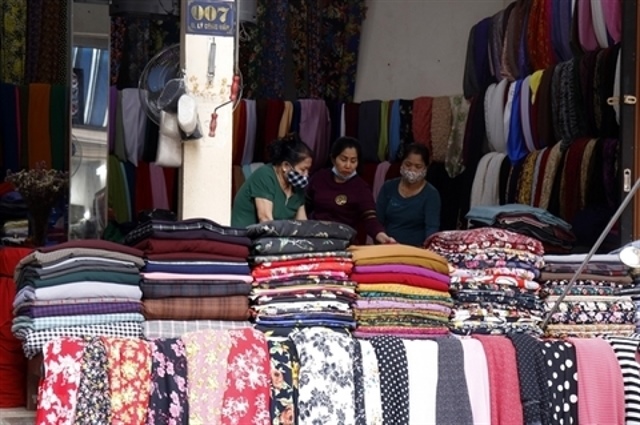SBV publicises data of credit activities for the first time
SBV publicises data of credit activities for the first time
Total national lending contracted 0.59 per cent in the first four months, reaching about VND2,617 trillion (US$125.82 billion) on April 30, the State Bank of Viet Nam announced.
This was the first time the central bank had systematically publicised data involving credit activities since Circular 35/2011/ TT-HNNN, a document it issued to stimulate timely monetary and banking information, became effective on April 1.
Lending for manufacturing and processing industries represented the largest ratio in the total outstanding loans, increasing 5.19 per cent to reach nearly VND607.85 trillion ($29.22 billion).
Wholesale, retail and automobile and motorcycle repair followed closely with an outstanding loan of VND524.07 trillion ($25.20 billion), although lending for these areas declined 1.83 per cent.
In four months, banks raised nearly VND2,534 trillion ($120.7 million) from people and enterprises, up 3.6 per cent over the end of last year.
While money mobilised from the people increased sharply by 11.78 per cent to total VND1,450 trillion ($69.71 billion) over the period, enterprise deposits fell by 5.6 per cent, reaching VND1,084 trillion ($52.12 billion).
Nguyen Duc Hung Linh, director in charge of research and investment advise at Saigon Securities Inc (SSI), told vneconomy.vn that the decline in company deposits was attributed to economic difficulties having whittled profits away.
Many firms deprived of capital were hoarding money to lend to each other instead of depositing at banks, he said.
Total money supplies mounted to around VND3,036 trillion ($145.96 billion) at the end of April after increasing 3.14 per cent in the first four months, the SBV reported.
SSI analysts said the money supply increase was due to the central bank having pumped about VND180 trillion ($8.65 billion) into the market to buy US dollars.
On April 30, the ratio of outstanding loans on deposits reached a general level of 86 per cent, according to the SBV. Joint-stock banks, with a specific ratio of 77.6 per cent, were showing more security than State-owned banks, with 107.8 per cent.
Joint-venture and foreign banks had the highest capital security rate of 32.54 per cent, doubling the general level of the banking system at 14.55 per cent.
State-run banks proved more profitable with a return on assets (ROA) ratio of 0.43 per cent and a return on equity (ROE) of 4.87 per cent, both nearly doubling those of joint stock banks
vietnamnews

























